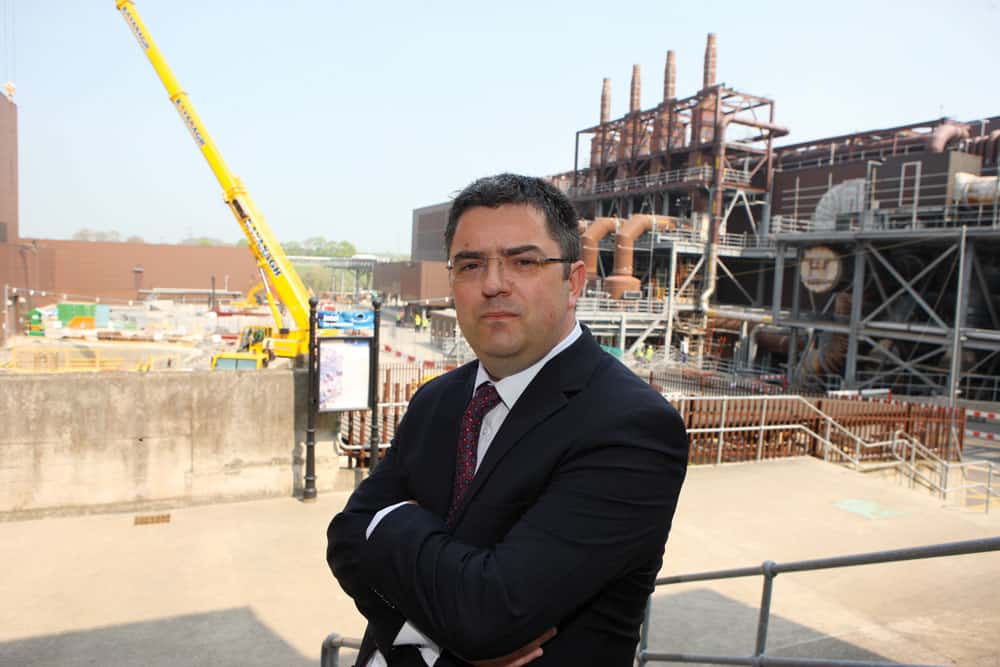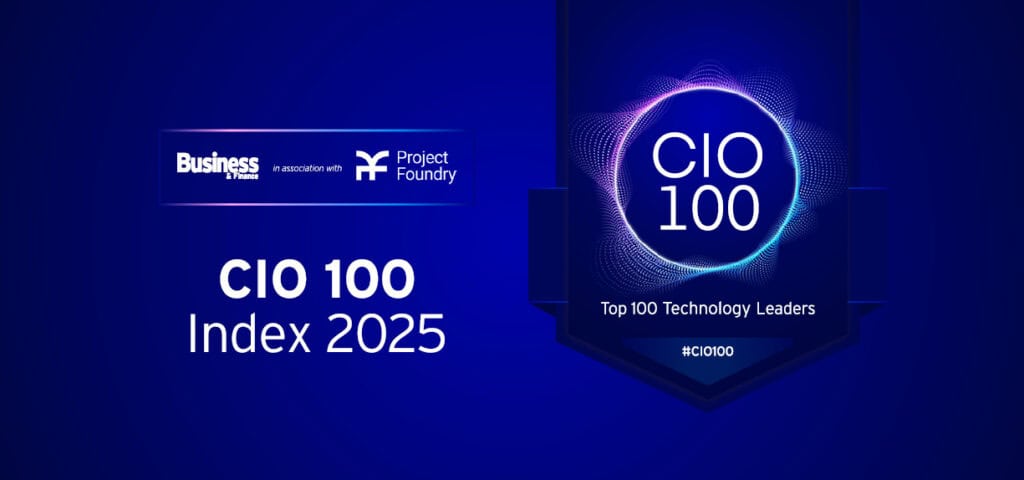General manager of Intel Ireland Eamonn Sinnott tells John Walsh why the Leixlip plant has a bright future.
Driving through Leixlip on the way to the Intel plant, there is a notice on the window of the local estate agents that isn’t seen very often these days. Screaming out in big bold letters, it implores anybody in the vicinity with property to let to contact the office immediately. On entering the giant Intel complex, it quickly becomes apparent why. The plant is now the biggest building site in the country. There are roughly 1,000 construction workers building one of the most advanced manufacturing facilities anywhere in the global network of Intel manufacturing bases. And in view of Intel’s position in the market, that means anywhere in the world.
Speculation had been growing over the past few years that Intel’s future in Ireland was under threat. Those rumours were well and truly quashed in January when a $500m investment was announced.
Eamon Sinnott took over from Jim O’Hara as the general manager of Intel Ireland 12 months ago. He gently laughs when asked what the investment means for Intel’s future in Ireland. “The question reminds me of when I was in the [Intel] Albuquerque plant 20 years ago. The department I was in had just won a couple of billion dollars of investment. The first question that was asked was ‘what is next?’ It is a theme that has pervaded all my time at Intel.
“The answer then was the same as the answer today. It is demand that drives the need to invest and location decisions are taken subsequent to that. Intel will choose places that are able to give the best return on investment.”
He acknowledges that there had been speculation about the future of Intel in Ireland based on the rising labour and construction costs in particular. The company is setting up bases in emerging markets that have much lower cost structures than Ireland which makes competition much harder. But Intel does not make investment decisions based on the cost base alone, he says. He cites the manufacturing facilities in the US as proof of this. Intel’s results for the financial year 2010 point to a healthy future. Despite the worst economic downturn in OECD countries over the past few years, the tech giant posted revenues of $43.6bn, which was up 24% on the previous year and a net profit of $11.7bn, which was up 167% on 2009. The demand for Intel products has never been healthier, says Sinnott. One of the features of the investment landscape is that western bluechip companies are sitting on huge piles of cash. One of the factors underpinning the global recovery is that these cash piles will shortly be earmarked for investment. What are Intel Ireland’s chances of continuing its recent run of success? “We have to compete with all these new centres for new investment. What we have to compete on are the skills and flexibility of a capable workforce, which is organised in a way that enables them to deliver world-class results. It is not easy to replicate that just anywhere else.”
He proudly cites the Intel quality award competition the Leixlip operation won last December and which is open to all Intel plants worldwide as evidence that the Irish workforce is “second to none”.
“We have had an excellent track record here over the past 20 years. We are investing $500m to enable and prepare for the next wave of leading-edge process manufacturing. But we will never sit back and relax.”
One of the big advantages that this country holds is a benign business environment. The twin pillars of this approach have been a low corporate tax rate and a proactive industrial development policy.
The 12.5% corporate tax rate has come under huge pressure following the €85bn IMF/EU orchestrated bailout last November. The French and Germans have been looking for a gesture from the Government in return for lowering the interest rate. That gesture is an increase in the corporate tax rate, or at least agreeing to enter negotiations aimed at introducing a common consolidated corporate tax base throughout the EU.
Sinnott says it is “crucial” that there is no change to the corporate tax rate.”
What if the Government were to accede to EU demands and make a gesture of a 1% or 2 % hike in the rate? “I can only speculate on that answer. But If I were in Intel headquarters I would interpret that as the tax rate being adjustable. And when I was doing my calculations, my financial advisors would put a prudent number in there, something like the European average for the next decade. What multinationals crave is certainty. When you change that then the analysis of the country changes.”
The team at Leixlip have done some preliminary number crunching on the possible implications of a CCCTB, although Sinnott declined to comment on the results. “It is too early to say either way, but if it turns out to be an increase in the corporate tax rate through the back door, then it would be a negative.”
The Irish management team were competing for the $500m investment against the worst possible backdrop. Ireland was making the international headlines for all the wrong reasons. During the Celtic Tiger years there had been a sneaking suspicion that this country was nothing more than a loosely regulated tax haven. When the banking system imploded during the height of the economic crisis, there were plenty of international commentators lining up to call time on Ireland’s economic development model.
The truth, as ever, was lost in the translation, but the fallout was surely enough to scare potential investors? “Within the top levels of the company there is a very mature reflection. They understand the nature of problems of sovereign debt around the world. They understand this country’s difficulties, but they take a balanced view. They obviously sought assurances about the future.
“But the availability of a highly-skilled and technical workforce is a massive plus. If Intel didn’t believe that it could leave its leading edge process technologies in a safe pair of hands, then it would not do so.”
He says that there are a number of people who have passed though the Leixlip plant who have gone on to head up other Intel manufacturing sites throughout the world. The most recent of these is Anne Kelleher, who is the site manager of the New Mexico plant and has just become the first Irish woman to be appointed a vice president of Intel.
Manufacturing consent
Over the past decade a view has been taking hold that Ireland can no longer compete as a manufacturing location. Initially, the assumption was that the building boom would continue ad infinitum. When that harsh reality kicked in, the smart economy was seen as the new roadmap. That meant the services sector combined with high end research and development.
Sinnott sees things differently. He argues that advanced manufacturing has a bright future and that it could play an integral role in the recovery. “There is an old saying that a job in a factory was something you got if you didn’t do very well at school.”
He says that Leixlip plant is proof that this particular old saying is incorrect. “In Ireland we have built up skills and experience in advanced manufacturing that is a national asset. It should not be allowed go with the low skilled mass manufacturing. That would be throwing the baby out with the bathwater.
“We have to recognise that we have a competence in advanced manufacturing in this country in biopharma, biomed, IT and ICT that is healthy and vibrant. The companies involved in these sectors in this country are all cash rich.” He argues that there is a crucial role for R&D activities to play in the future development of the economy, but these activities by their nature do not generate buoyant levels of employment. Advanced manufacturing does and that is why it has to be developed and nurtured.
Overlaying all of this is a good education system. There had been an alarming drop off in science and technology graduates for much of the noughties. Sinnott says that his company does not need to hire the same volume of graduates as it did when it first came here 20 years ago. But he has no problem finding the high-quality graduates to meet his current needs.
He stresses that there has to be continued investment in the Stem subjects [science, technology, engineering and maths]. For its part, Intel pumps a considerable amount of time and energy going around to primary and secondary schools promoting the benefits of these subjects.
On Intel’s future in Ireland, the $500m gave a sense of ‘renewal’ to the Irish operations, says Sinnott. “The industry we are in is all about innovation. We are building this facility to make sure we are ready for the next phase of leading edge process technology. I am certain that is going to happen.”
Eamonn Sinnott: Intel Ireland General Manager & Vice President of the Technology Manufacturing Group
Eamonn Sinnott is Vice President, Technology and Manufacturing Group and General Manager of Intel in Ireland. He is responsible for all operational aspects of business in Ireland including Fab24, Intel’s first 300mm wafer fabrication facility outside of the United States.
Sinnott joined Intel Corporation in 1991 as manufacturing shift manager in Ireland. He has held a variety of factory management positions in Ireland, Albuquerque, N.M., and Portland, OR. Eamonn became the factory manager for the 300mm start-up/ramp of Fab24 in 2001 before taking over as the plant manager in 2006, successfully ramping the 65nm technology.
Prior to joining Intel, Sinnott worked as an engineer at Digital Equipment Corporation and as a manufacturing manager at Nuvotem.
Sinnott received an MBA from University College Dublin in 2000 and a bachelor’s in Science from University of Dublin, Trinity College in 1986. He is a board member of the Centre for Research on Adaptive Nanostructures and Nanodevices (CRANN), Trinity College Dublin, Ireland and director of the American Chamber of Commerce in Ireland.
He is married to Marion and they have three young children who keep them busy in their spare time with the active involvement in the local GAA among the many other activities. They currently live in Co Meath.
Eamonn was born and reared in Wexford town, and the family enjoy taking their summer holidays in the sunny south east helping them stay connected to family and friends.
About Intel Ireland:
Ireland is Intel’s centre of manufacturing excellence in Europe. Since 1989, Intel has invested US$7.5 billion turning 360 acres of the Collinstown Industrial Park into the most advanced industrial campus in Europe.
Over 4,000 people work at the Leixlip, Co Kildare campus and in addition, there are over 200 people employed at Intel Communications Europe located in Shannon, Co Clare, which is the Ireland product development arm of our Communications Product Group.
The ‘Fabs’ (fabrication facilities) at the Leixlip campus produce 300mm wafers on multiple process technologies and these combined facilities constitute one of Intel’s most technologically advanced, high-volume manufacturing sites in the world.
These facilities produce leading-edge silicon products that power platforms and technology advancements which are essential to the way we learn, live and work today.
In the past the Leixlip campus was also a centre for 200mm semi-conductor manufacturing and Assembly and Test and Systems Manufacturing.
The core of advanced manufacturing capability at the Leixlip site is a key enabler for numerous research and development initiatives that are carried out at the campus.







